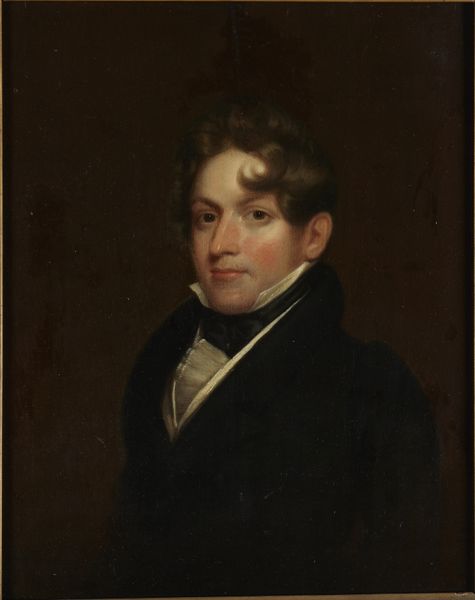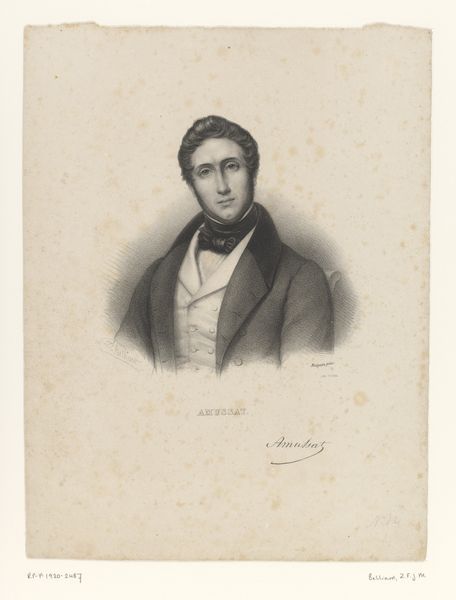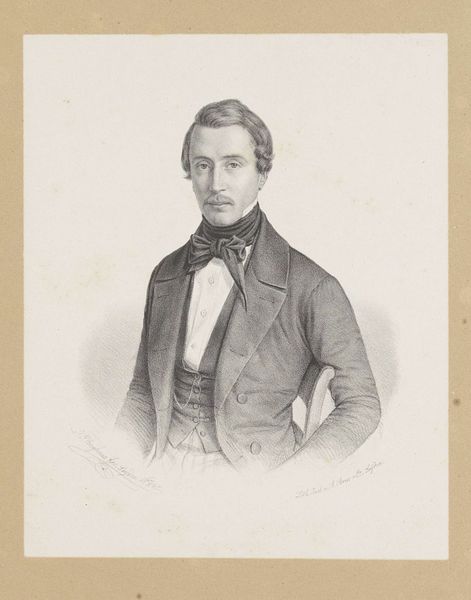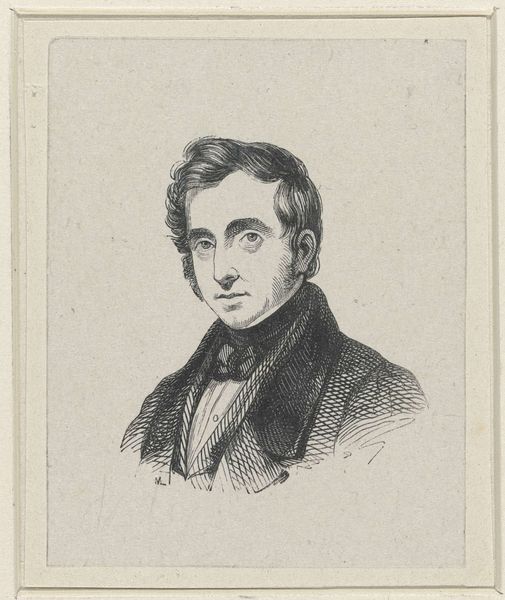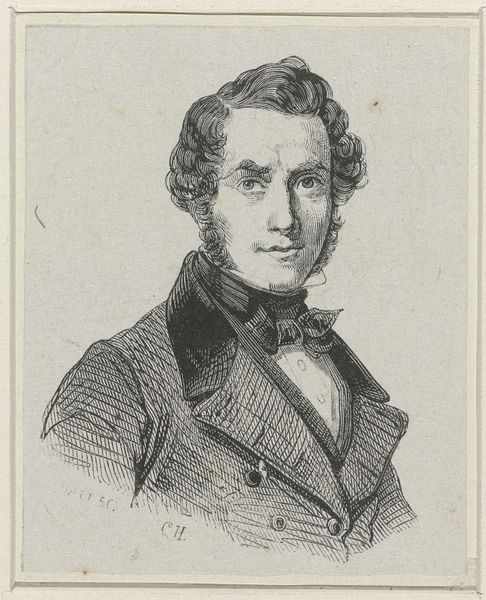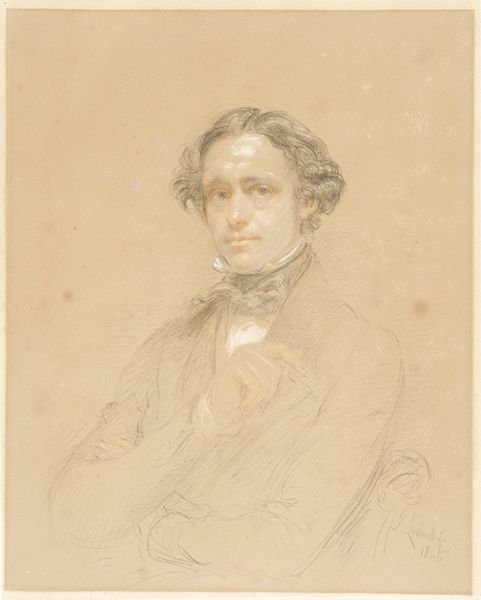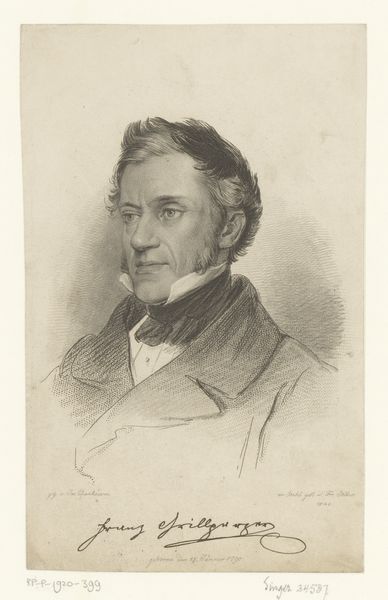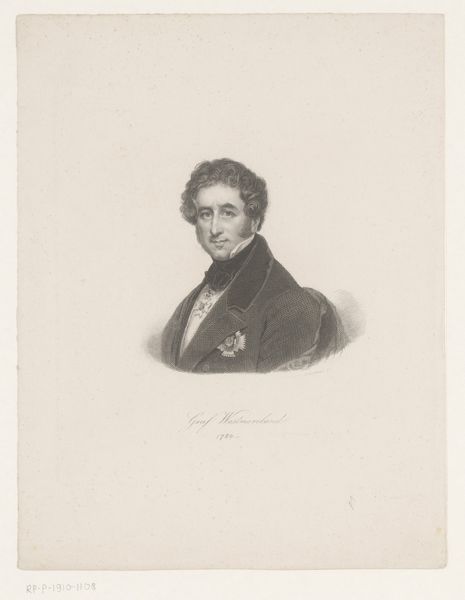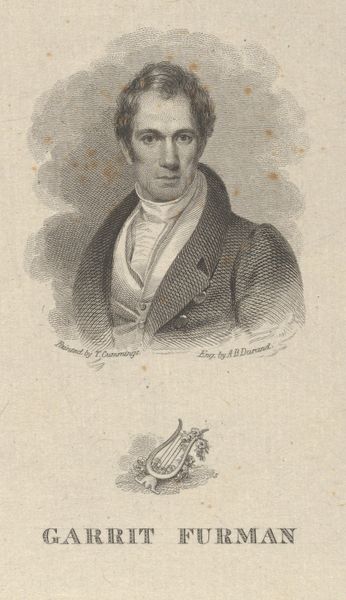
watercolor
#
portrait
#
form
#
watercolor
#
romanticism
Dimensions: height 174 mm, width 145 mm
Copyright: Rijks Museum: Open Domain
Curator: Just ahead is the "Self-Portrait of Johannes Hari I," rendered in watercolor between 1782 and 1849. It is currently held at the Rijksmuseum. Editor: Well, he certainly looks like he takes himself seriously, doesn’t he? There's a sense of formality, yet something soft around the edges, especially in that wispy bit of hair and how his eyes meet yours. Curator: It’s a window into 19th-century sensibilities. Consider the visual language here; portraits during this time functioned to present a controlled, respectable image. He isn't looking away; it suggests confidence, perhaps even ambition. His dress reinforces the look of upward mobility, so perhaps he's advertising. Editor: I think the soft focus betrays a Romantic's soul. I get a pensive, introverted vibe. He's dressed in respectable clothing, of course. But it doesn't disguise the dreaminess—the searching nature that the Romantic movement espoused. Curator: And watercolor as a medium lends itself to capturing such feelings. The washes of color allow for a softness that other, more precise media wouldn't achieve as easily. It also reflects a democratizing influence, a move away from grand oil paintings affordable only to the elite. Editor: The blurring between form and emotion here really sings to me. He knows who he wants you to think he is but gives away that other self that he carries deep within. The tension adds complexity. Curator: I agree; it gives it staying power. It resonates as more than just a depiction; it evokes a shared human quality, that delicate negotiation between public presentation and private experience. Editor: Well, it is nice to see through the artifice for a change and imagine a bit of truth, whether accurate or not! It really pulls me in, making him real to me now.
Comments
No comments
Be the first to comment and join the conversation on the ultimate creative platform.
